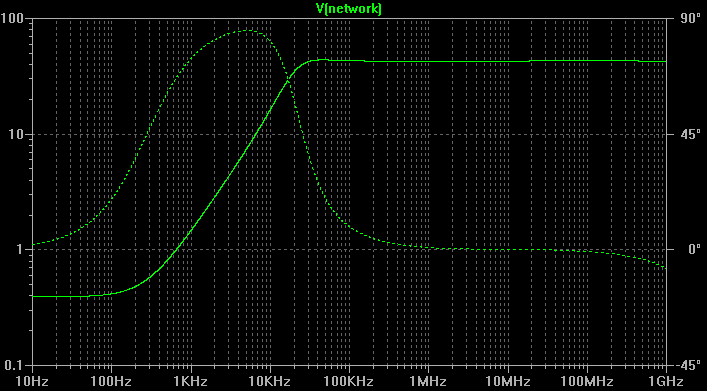I am sending a 10 MB/sec digital data stream by amplitude moduating a infrared quantum cascade laser. The laser requires a hefty bias of about half an amp (which drops about 8.5 volts across the laser). I am mixing the digital signal with the bias using a broadband bias-tee (a Picosecond Pulse Labs 5546). The bias-tee expects a 50 ohm load on the AC+DC port. When I use a 50 ohm power resistor to terminate the line, all is well and the signal looks good on the scope. However, when I use a load that simulates the laser (a 5 watt 8.2 volt zener in series with a 1 ohm resistor) there is extreme ringing. This could be expected, since the dynamic impedance of this simulated load is about 2.5 ohms (the dynamic impedance of the laser is about 4 ohms at 500 ma).
I cannot just increase the load impedance with a series resistor, because at half an amp it would generate about 12 watts of heat inside the temperature-controlled laser enclosure. However, the modulation amplitude is only about 70 ma, which at 50 ohms generates only a quarter watt, which is acceptable. So what I need to do is present a 50 ohm load to just the RF and not the DC.
Is there an off-the-shelf device that will do this? If not, are there design examples of a passive network for this purpose?



